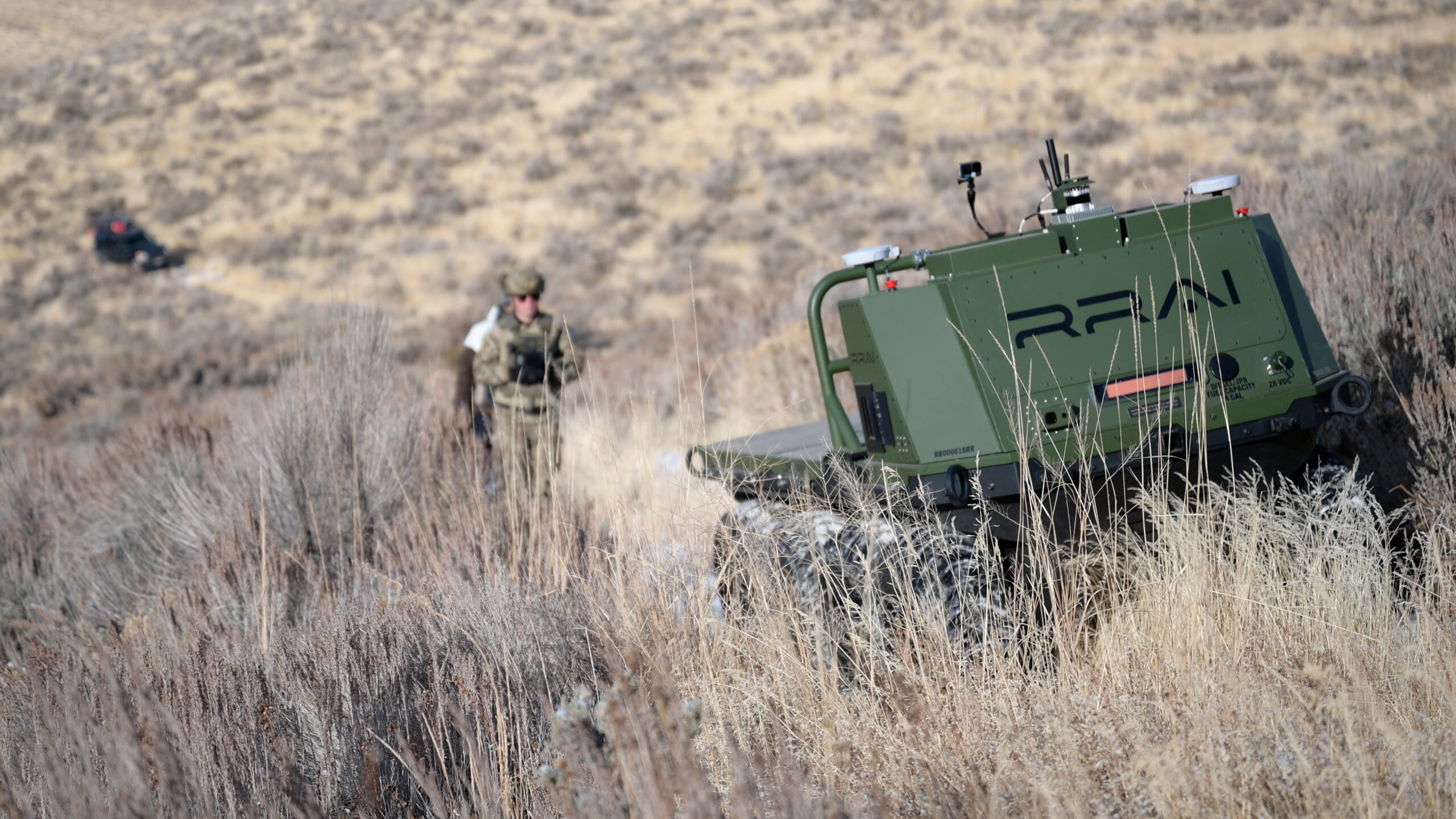RRAI is proud to support the US Army's Robotic Combat Vehicle "RCV" team by bringing autonomy to the forefront of modern formations. While the original design for the Government’s autonomy efforts centered around teleoperation and remote operation, anyone who has ever done a road-trip across windy and undulating terrain can tell you operating a gaming device from the backseat of a moving vehicle is a recipe for a lost lunch. That’s why we are passionate about bringing reliable and operator-centric autonomy to robotic platforms.
Autonomous systems are coming to every conflict, in all domains. Ground combat systems present a preponderance of Western force's arsenals and are heavily reliant on humans for everything from indirect fires to logistics. RRAI and the commercial industry are pushing the boundaries of delivering autonomy to these systems by leveraging private funding to develop, test, and harden “tomorrow’s technologies” (i.e., things in the realm of science and technology programs) for warfighters today.
Within the Army, the RCV is the first of a fleet of new combat vehicles which will not only operate in these conflicts but also present the most efficient means of deterring major wars. Soldiers' lives in Ukraine and in future conflicts can be preserved and protected by augmenting formations with robotic partners that can project the threat of force. Future programs using the robotic concept need to overcome the long times that typically exist between concept development, materiel design, production, and the ultimate deployment. Put simply, rapid innovation is difficult, but not impossible.
The base platform design for RCV is a novel uncrewed ground vehicle equipped with an integrated drive-by-wire system. Designed to host modular payloads, the RCV is a multi-role sensing and weapons platform which could service mechanized and cavalry formations. The Department's approach – pairing the best of vehicle hardware systems with the best of autonomy hardware and software – enables the program to address emerging threats and requirements without taking the design back to a “blank sheet” or initial design. More importantly, it is a phenomenal solution to rapid innovation, development, and fielding.
RRAI’s AutoDrive® is form-fitted to the base platform and represents the full capabilities of our dual-use approach to autonomy. We recognize that it can’t take a PhD to operate the system, yet needs to be capable of operating in complex environments. Soldiers and operators need to trust, both deeply and implicitly, that their robotic teammate will carry out its portion of the mission without consuming their mental shelf-space with supervision and control. We do this by building autonomy to meet the harsh conditions of non-pristine roadways. Often, the commercial industry hears that the commercial industry does not build to the requirements of the DOD. However, RRAI has been building these systems for decades and we see the same problem sets in both defense and commercial applications. Thus we built a platform from the ground up to address both.
RRAI is excited to continue work with the RCV team on Phase II of the Ground Vehicle Autonomy Pathways program where we will continue demonstrations of AutoDrive® against DOD’s and Defense Innovation Unit’s stringent design and performance requirements. We’re confident that our position puts us at the front of software development for the program both in terms of funding and pace to ultimately deliver production-ready level software in time to meet fielding requirements in 2027.
Contact Us for more info.






